G2OM Demo
The G2OM (Gaze-2-Object-Mapping) Demo is designed to explain the benefits of using Tobii G2OM (read more about it here). The demo shows the most common methods of determining what object the user is looking at and comparing it against Tobii G2OM.
The demo is divided into different steps that guides the user through the experience.
- Introduction Step
- Step 1: Ray Casting
- Step 2: Gaze Colliders
- Step 3: Tobii G2OM
- Step 4: Dynamic Objects
- Step 5: Continuous Gaze
- Final Step
Input
Press the TouchpadButton to continue to the next step.
Press the MenuButton to toggle the gaze visualization on/off.
| Device | Version | Download |
|---|---|---|
| HTC VIVE Pro Eye | v1.0.0 |
Introduction Step
In the first step, the user is introduced to eye tracking, the controller input is explained and the user is asked to calibrate and position themselves in the square on the ground.
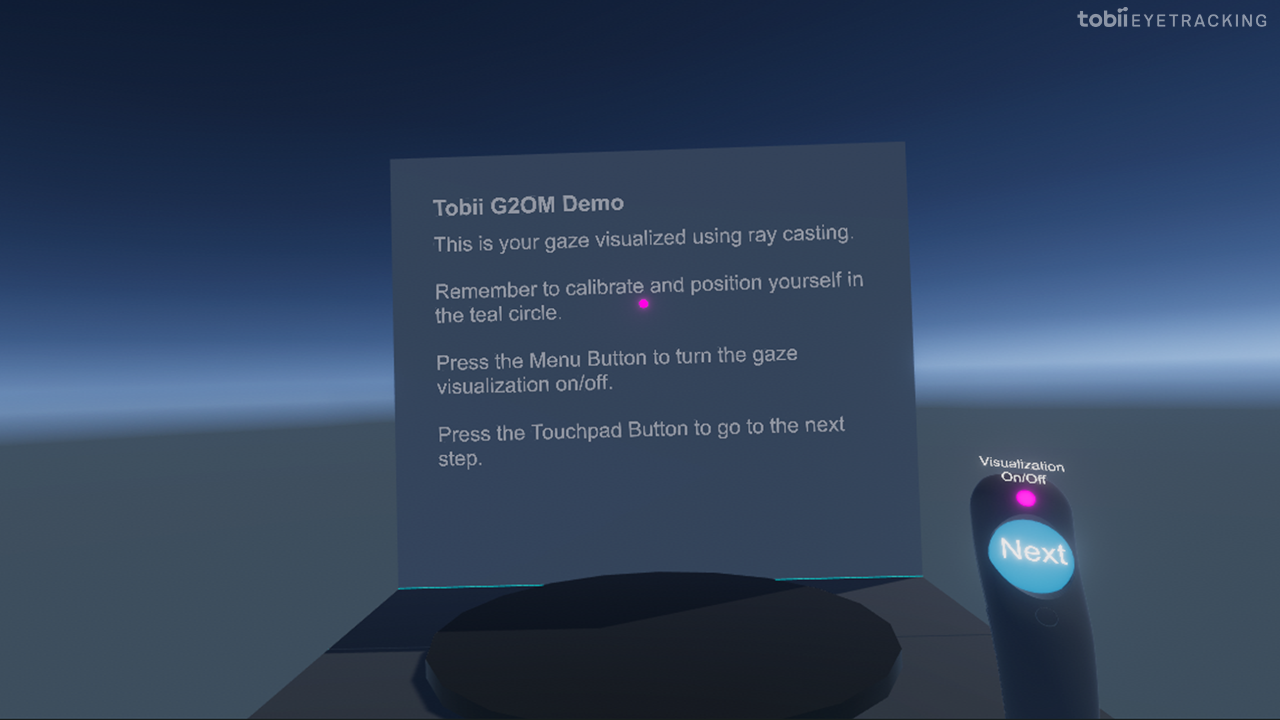
Step 1: Ray Casting
A set of cubes are shown and the user can focus and select these using the most common method, ray casting, where a ray is cast from the user’s eyes into the direction of where they are looking.
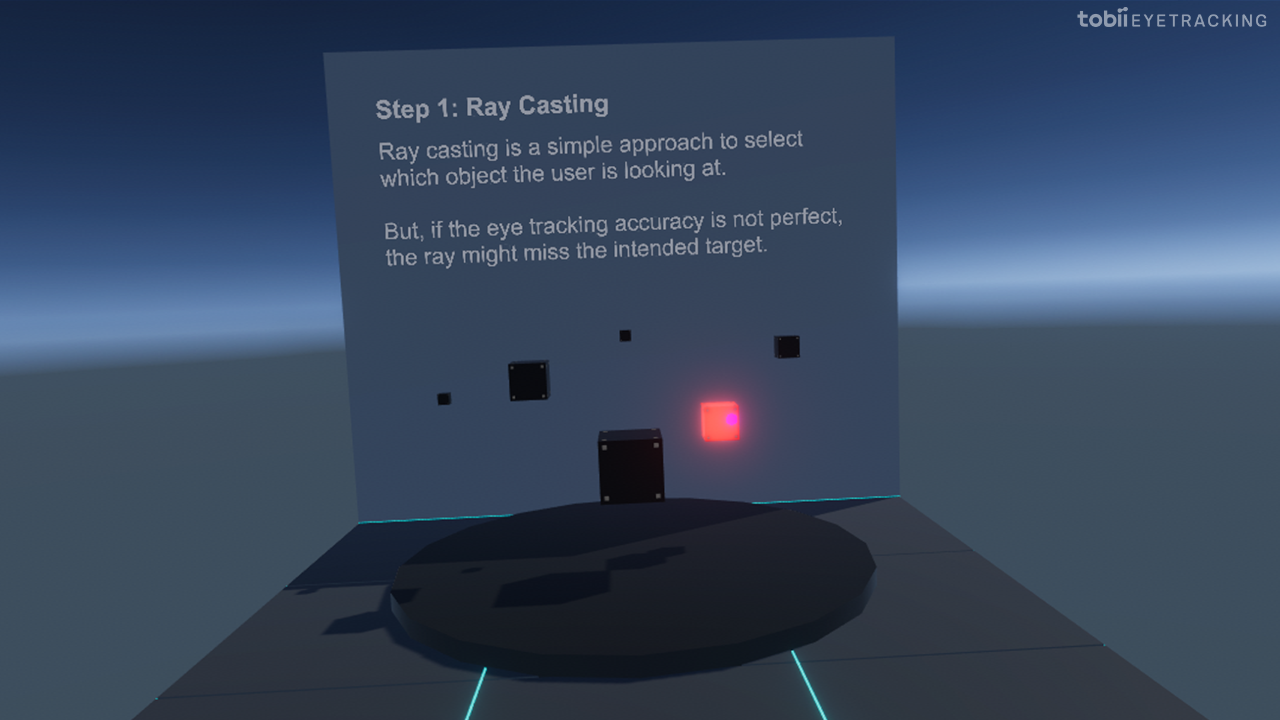
If the ray hits a cube, that cube is highlighted in red.
But if the ray misses the cube, even though the user looks at it, the cube won’t be highlighted.
Step 2: Gaze Colliders
In the next step, oversized gaze colliders are added to each cube to catch rays that slightly miss the cubes.
The platform is then rotated to showcase that the oversized colliders can overlap, leading to the incorrect object being selected.
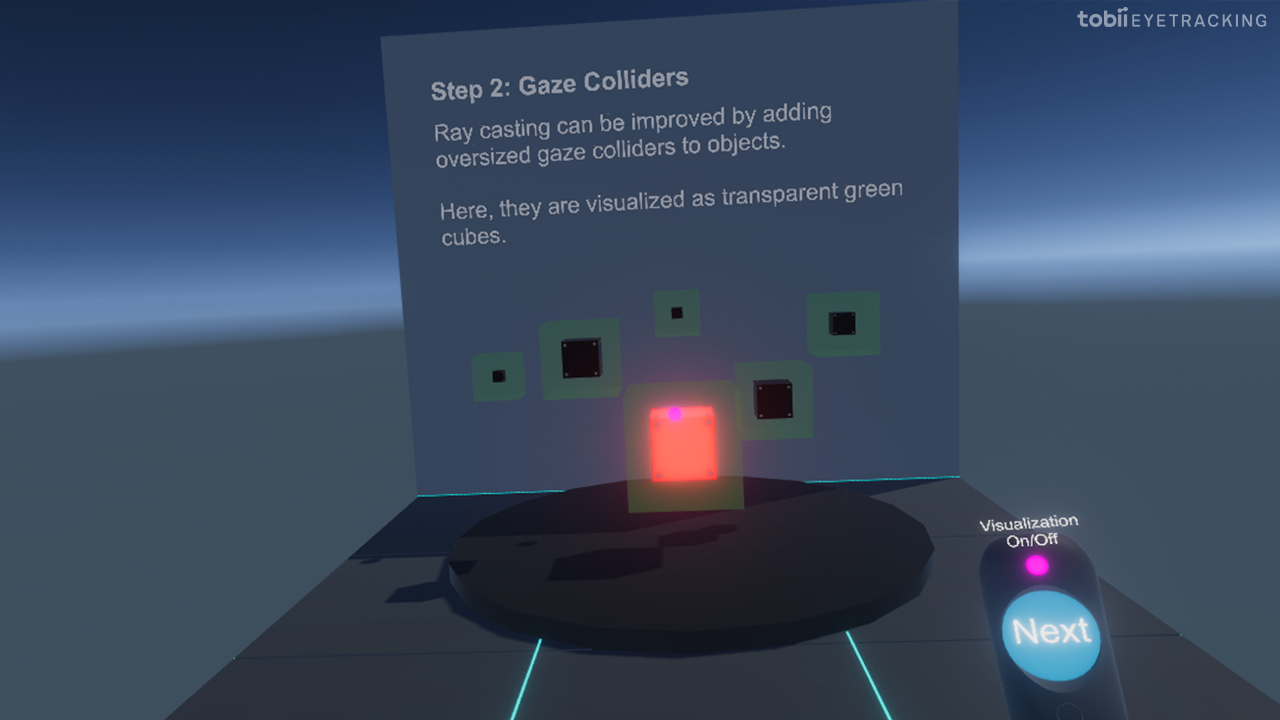
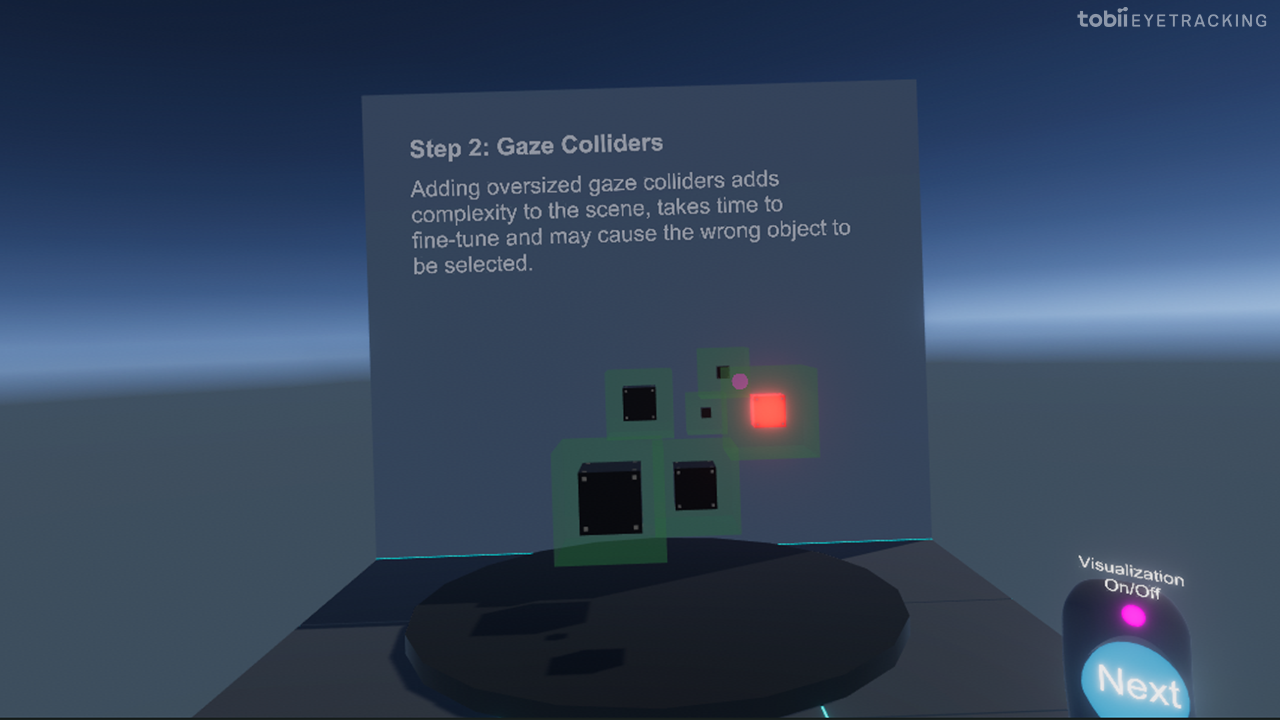
Step 3: Tobii G2OM
The oversized gaze colliders are removed and Tobii G2OM is activated to show how it accurately selects the object the user is focusing on without the need of extra colliders or design considerations.

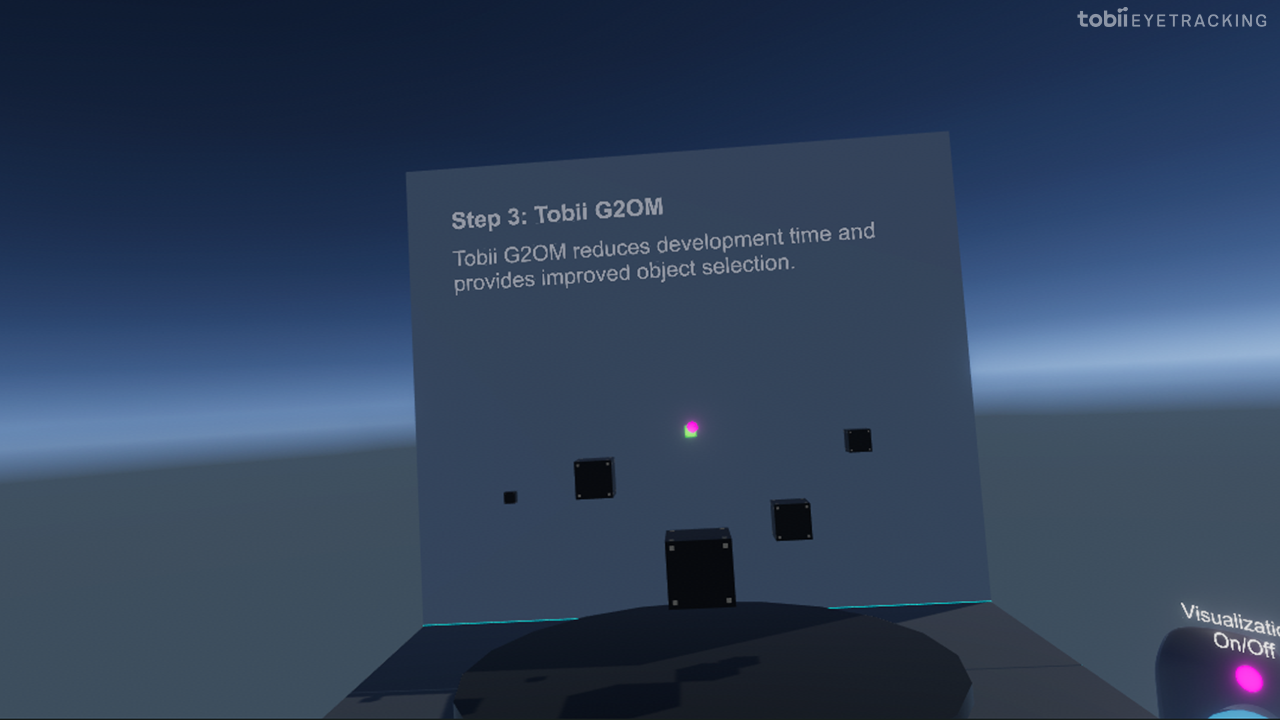
Step 4: Dynamic Objects
We then compare ray casting with and without oversized gaze colliders against Tobii G2OM using dynamic objects that move.
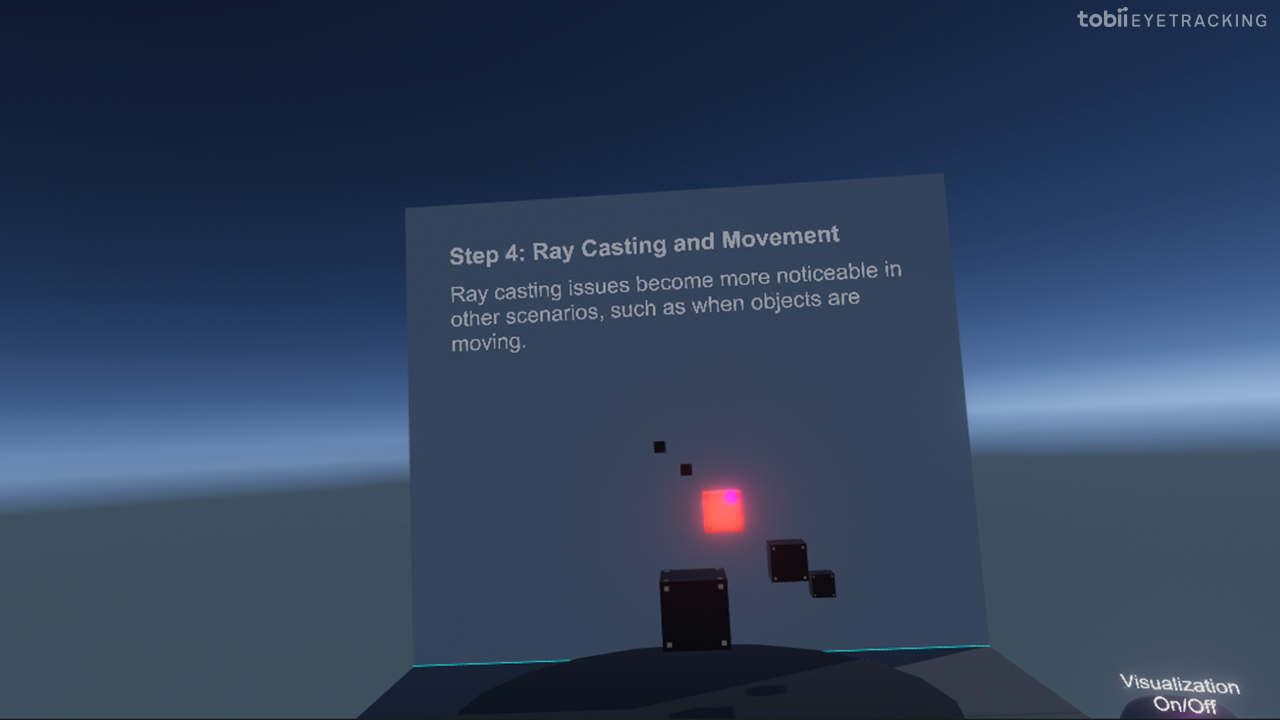
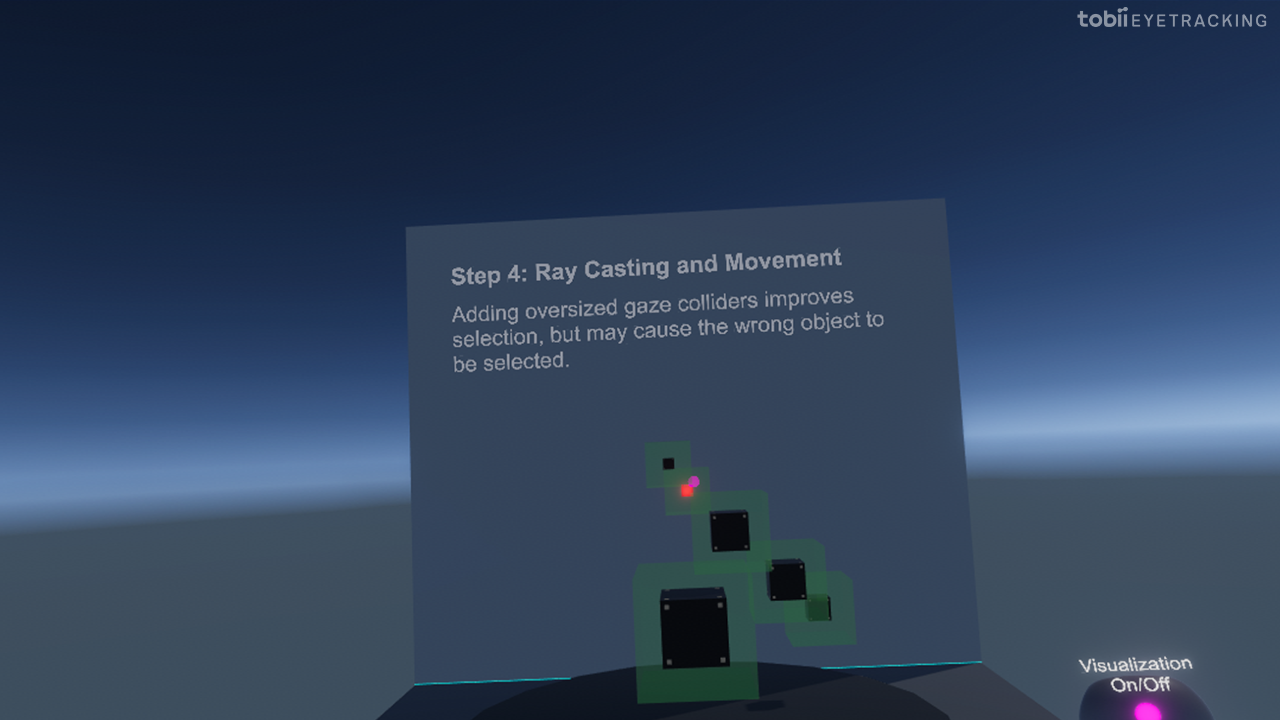

Step 5: Continuous Gaze
After this, the user can compare ray casting to Tobii G2OM by displaying continuous gaze focus of the cube with the help of 2 graphs. The graphs become filled when the respective method considers the object to be focused by the user. The green top graph shows Tobii G2OM and the bottom red graph shows ray casting.
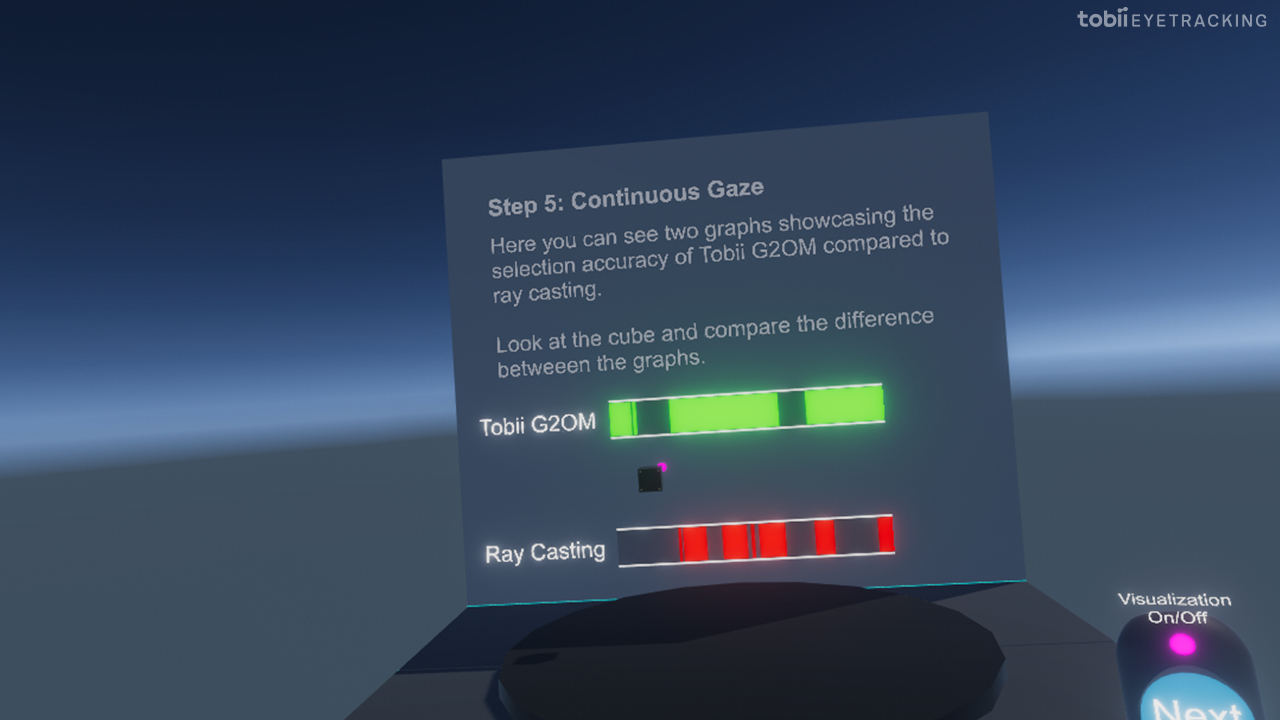
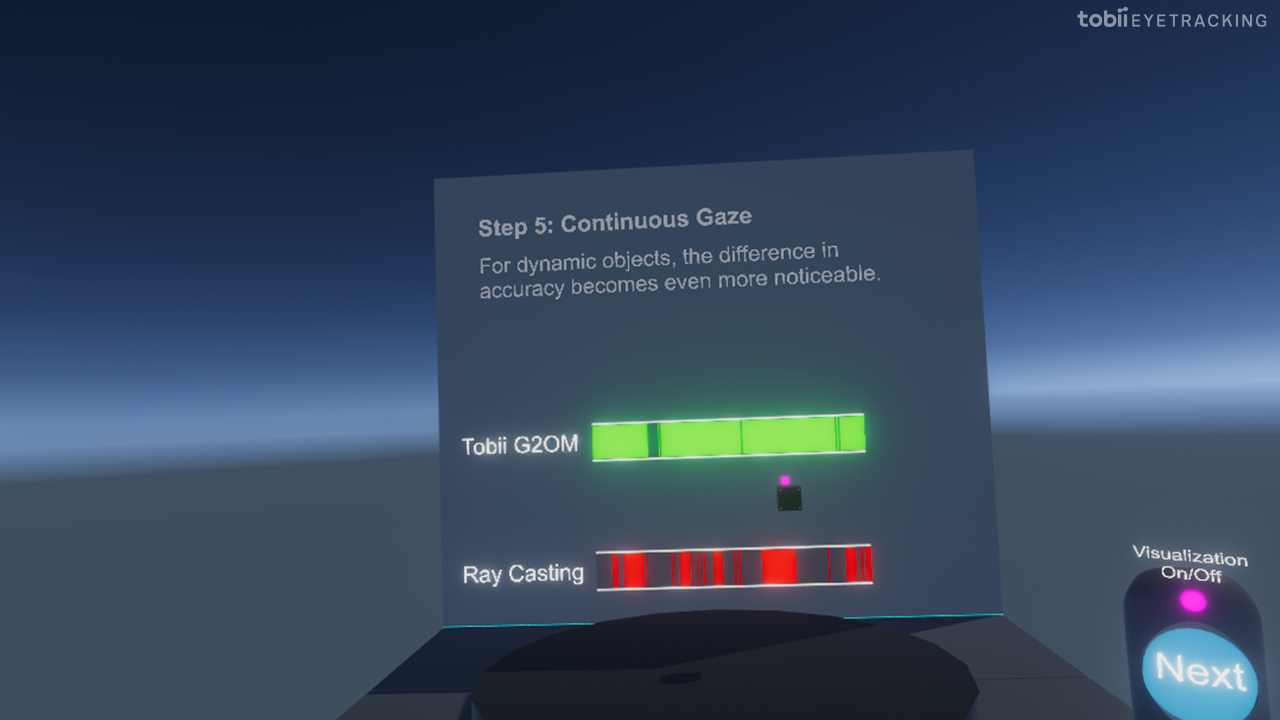
Final Step
In the end, we give the user the option to restart the demo from the first step.
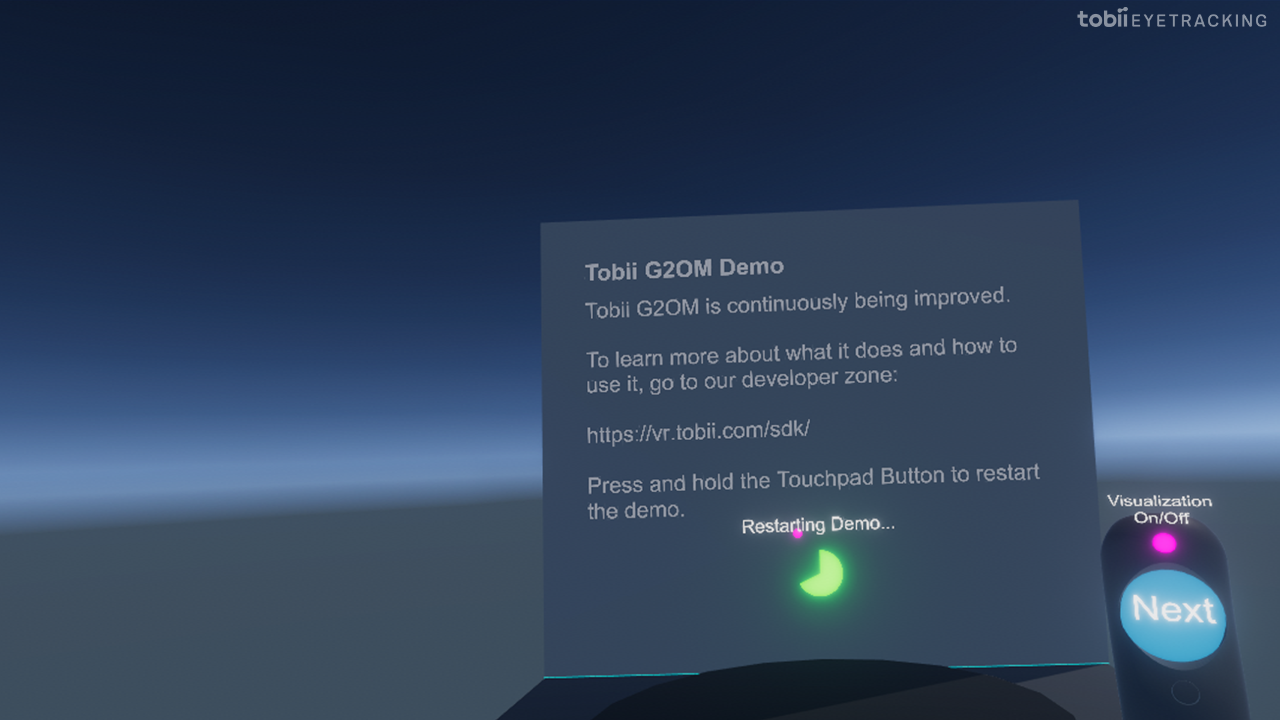
The demo has a link for the user to go to this website to read more about Tobii G2OM.
If you want to try Tobii G2OM, it’s included in our Tobii XR SDK, which you can download here.
